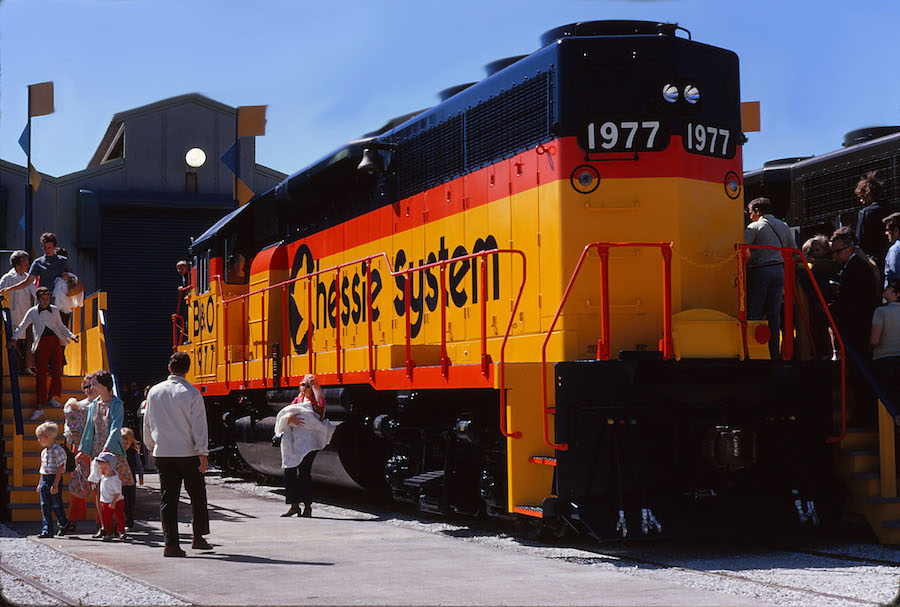1966 Employee Open House |

Built in April of 1966, the #1703 was one of twenty SD40s delivered to the Atcheson Topeka
& Santa Fe. The six-axle freight hauler was upgraded in 1981 to an SD40u; 17 years later,
the 3000-hp roadswitcher was conveyed to the BNSF and re-numbered 6303. (R. Craig photo) |
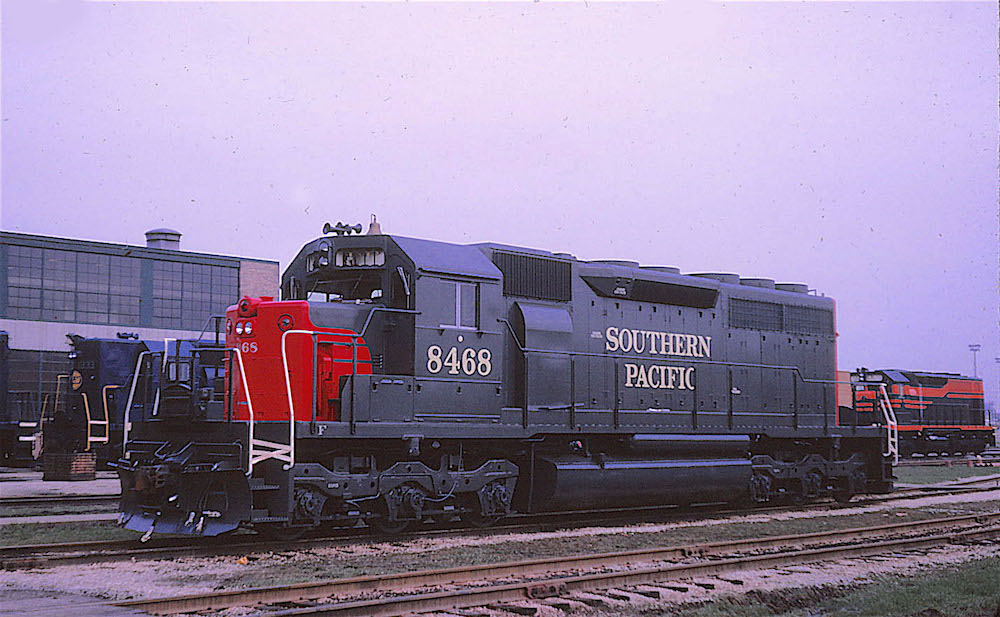
EMD delivered 89 SD40s to the Southern Pacific, including the #8468 in April 1966. The six-
axle loco was rebuilt as part of the railroad's capital revitalization program and renumbered
SD40R #7366. Conveyed to the Union Pacific in 1996, it was retired in 1999.
(R. Craig photo)
|
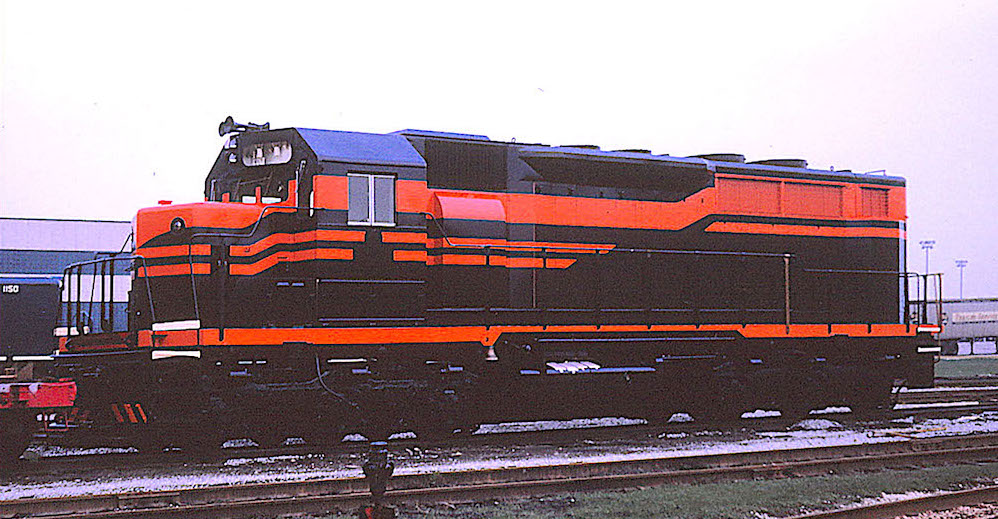
Don't bother looking for a description of this six-axle EMD in your copy of the "Diesel
Spotters Guide"; it is not listed. Built in early 1966, the locomotive is one of six SDP28s
constructed for the Korean National Railroad (#6301-6306). Driven by a V16-567 engine, the
locomotive was rated at 2000-hp. The SDP28s were later renumbered to 6101-6106. (R. Craig photo)
| 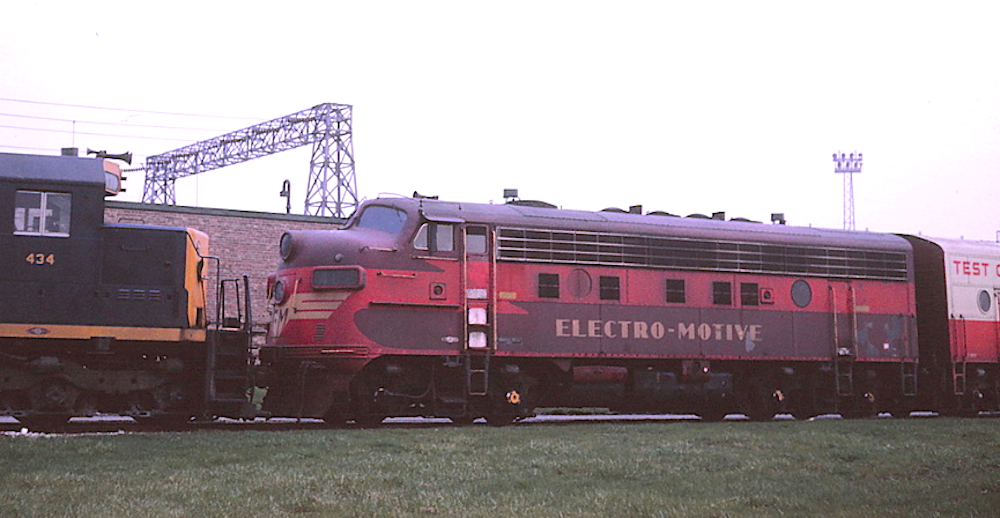
Built originally for the Chicago St.Paul Minneapolis & Omaha railroad (#6501A) in December
1949, the F7A was acquired by C&NW; it was retired and used as trade-in fodder in early 1959.
The loco was re-incarnated by EMD as an F9A in the Spring of 1960 and used as a test bed;
it was known to host early components of EMD's new 645 prime mover. (R. Craig photo)
|
1972 - EMD's 50th Anniversary |
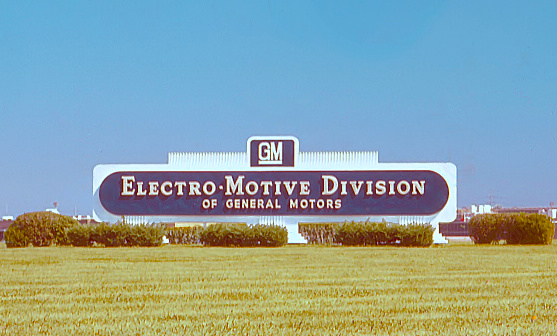
For decades, the Marquee on the front lawn at EMD stood for wonderment and excitement, but
on September 21 1972, it also meant "welcome." (Bill Howes photo)
| 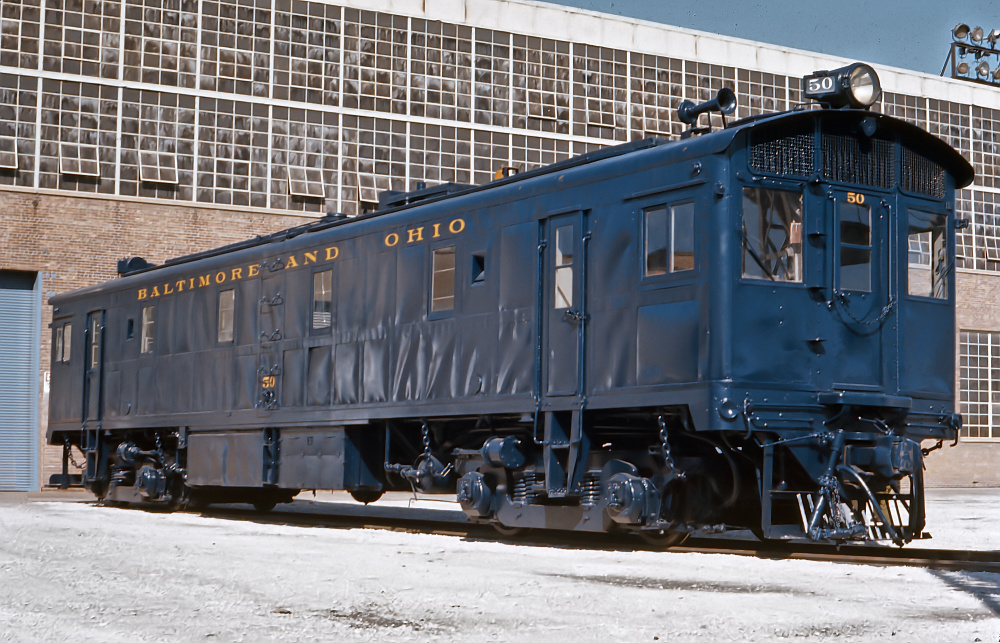
B&O #50 was the first diesel locomotive built specifically to haul non-articulated passenger
trains. The 1800-hp model AA was delivered by Electro-Motive Corporation in August 1935.
(Bill Howes photo)
|
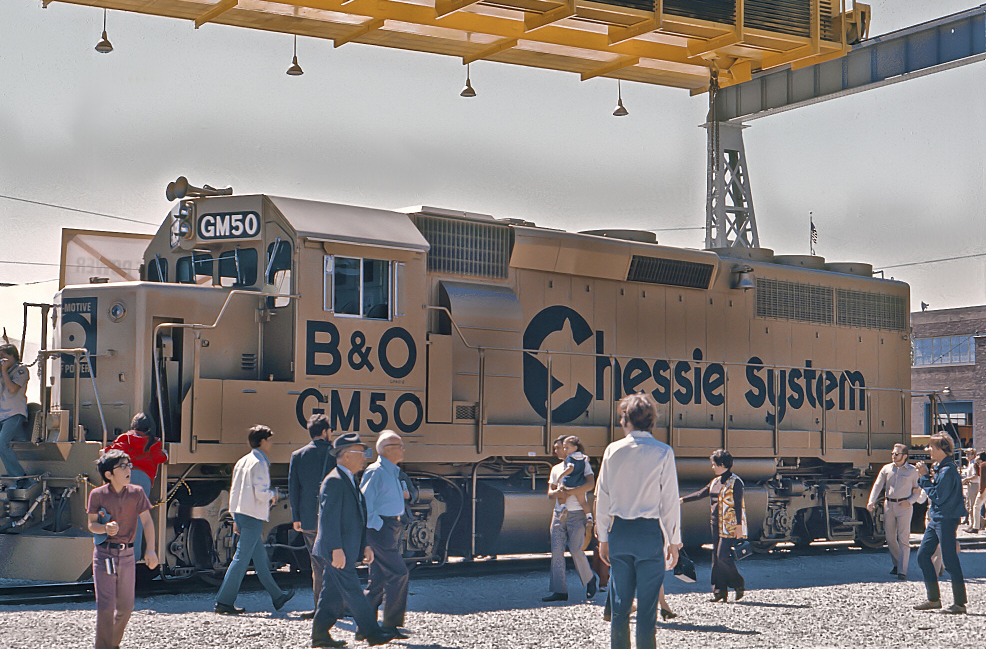
Each EMD Open House seemed to have had one locomotive exhibit that stood out more than all
the others on display. At the 1972 Open House, the gold-painted GP40-2, which honored EMD's
half century as a locomotive builder, was the one. GM50 retained the one-of-a-kind paint
scheme until 1984, when it became Chessie #4164. The 3000-hp loco joined the CSX family as
#6063. (Bill Howes photo)
| 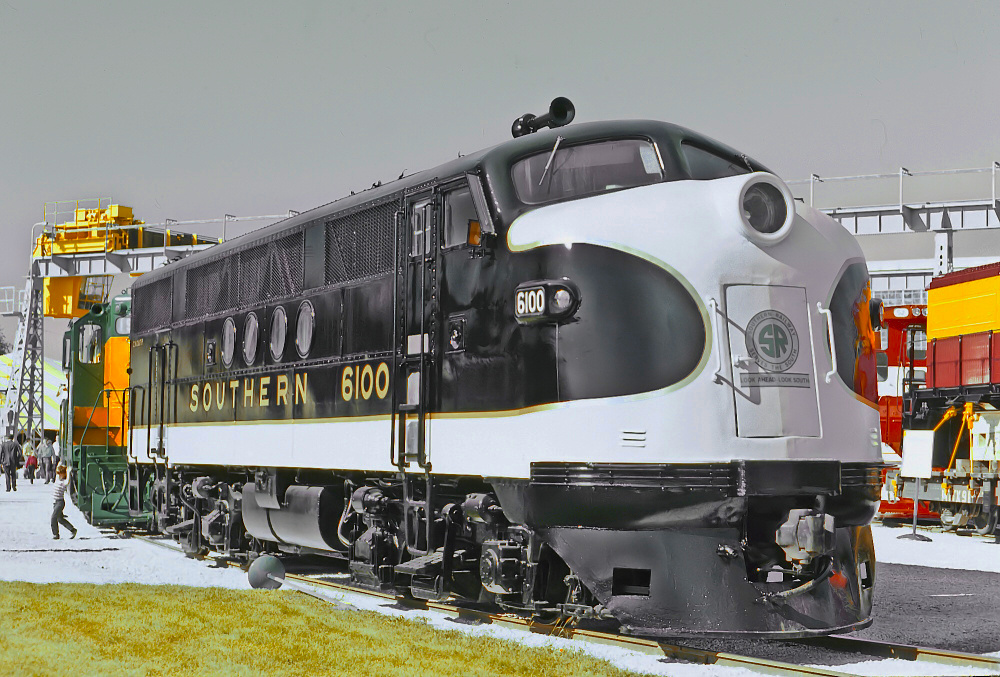
Southern Railway #6100 was one of several notable diesels on hand to mark the Golden
anniversary and evolution of the Electro-Motive Division. The 1350-hp cab-unit was built
in 1939 and toured the U.S. as EMC #103A. Designated a historic landmark in the 1980s,
the locomotive was on loan from the National Museum of Transportation of St. Louis for
the EMD birthday event. (Bill Howes photo)
|

This freshly painted GP40-2 is headed back in to the shop for some important finish work,
including the missing letter "i" from the word Chessie. (R. Craig photo)
| 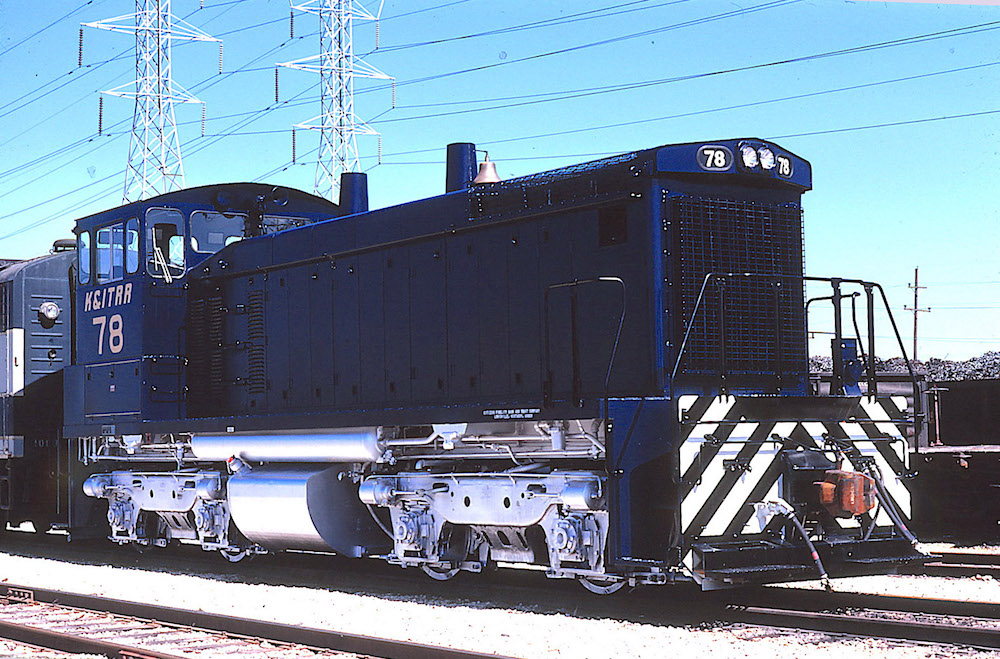
Kentucky & Indiana Terminal SW1500 #78 ready for shipment waits behind the plant, while
sister #77 stands in the exhibit area showing-off new silver flexicoil trucks. ( R. Craig
photo)
|
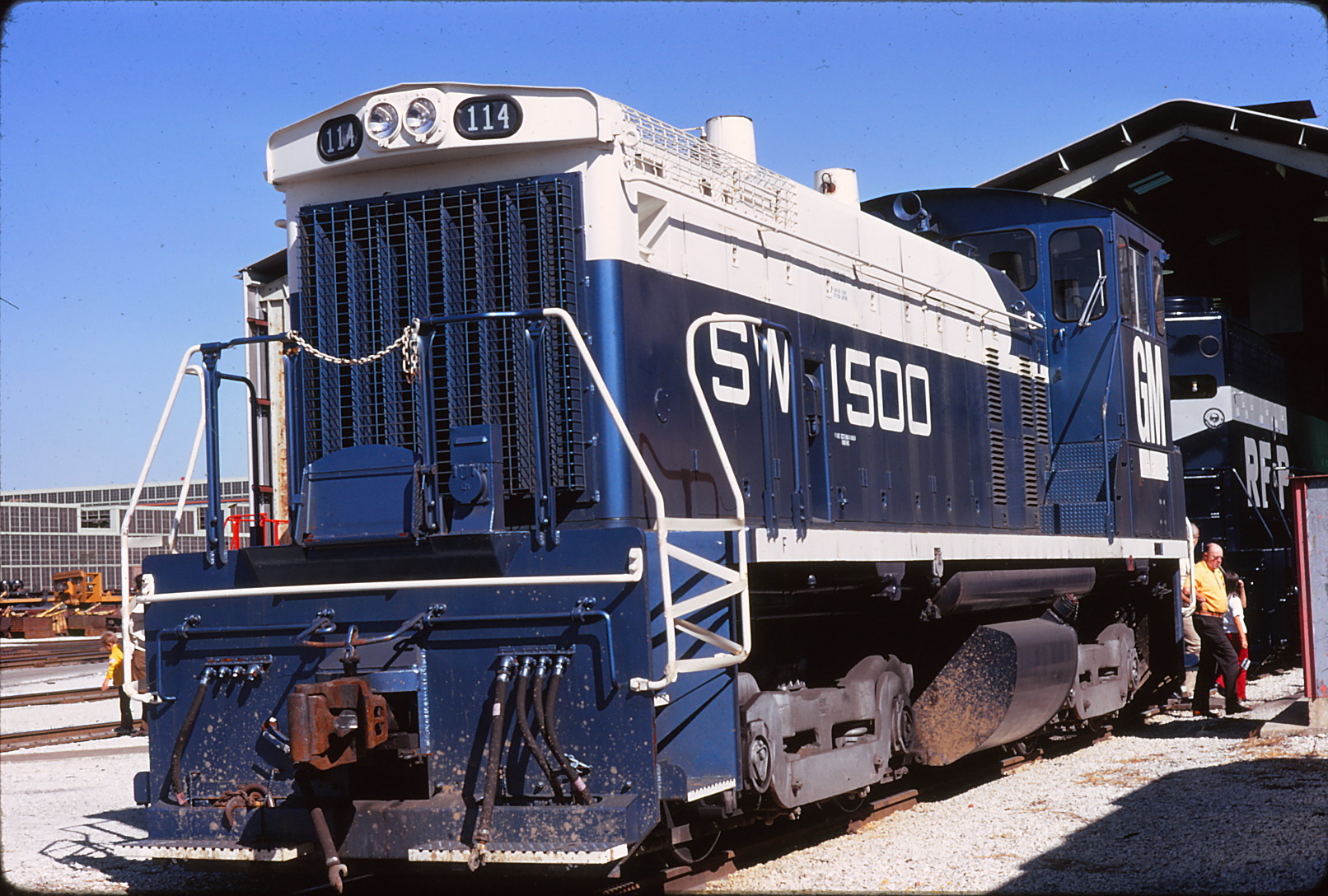
EMD's SW1500 & SW1000 models were the first switchers to be powered by the builder's new
V12-645E engine. SW1500 #114 pictured here is one of nine such units (#106-114) to wear a
variant of the company's standard blue & white demonstrator attire. Built mid-way through
1971, the locomotive was used primarily as an in-plant switcher and had very few
opportunities to showcase it's strengths to potential buyers. (R. Craig photo)
| 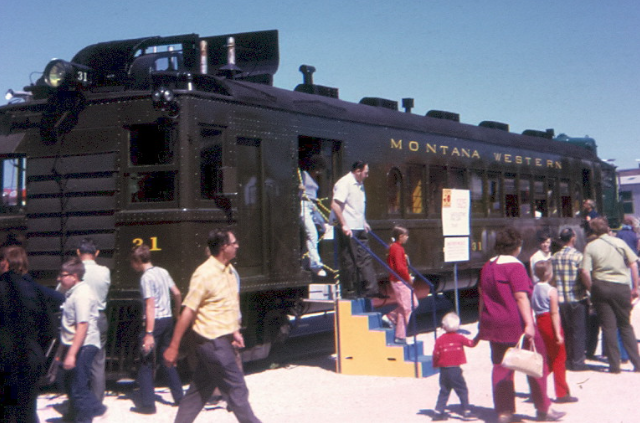
The year was 1925, when a three-year-old Electro-Motive Corp. in Cleveland, Ohio built this
gas-electric rail motor car. The purchaser of the 32-ton machine was the Great Northern which
assigned road number 2313. Driven by a Winton gasoline engine, the rail car worked for the
GN until 1939, when it was acquired by the Montana Western as their #31. The oldest surviving
EMC transportation product was borrowed from the Mid-Continent Railway Museum for the 50th
Anniversity Open House. (Gordon Schmidt photo)
|
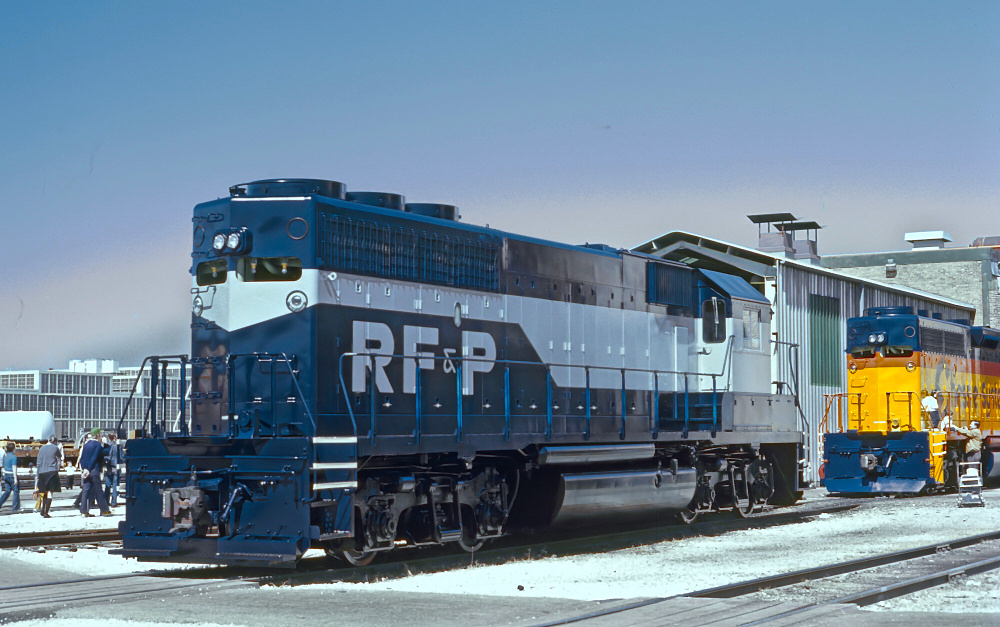
RF&P's last new locomotive order was for six GP40-2s (#141-146). One of the four-axle road
units was pulled temporarily from the shop prior to receiving lettering, logo and
number-boards. (Bill Howes photo)
| 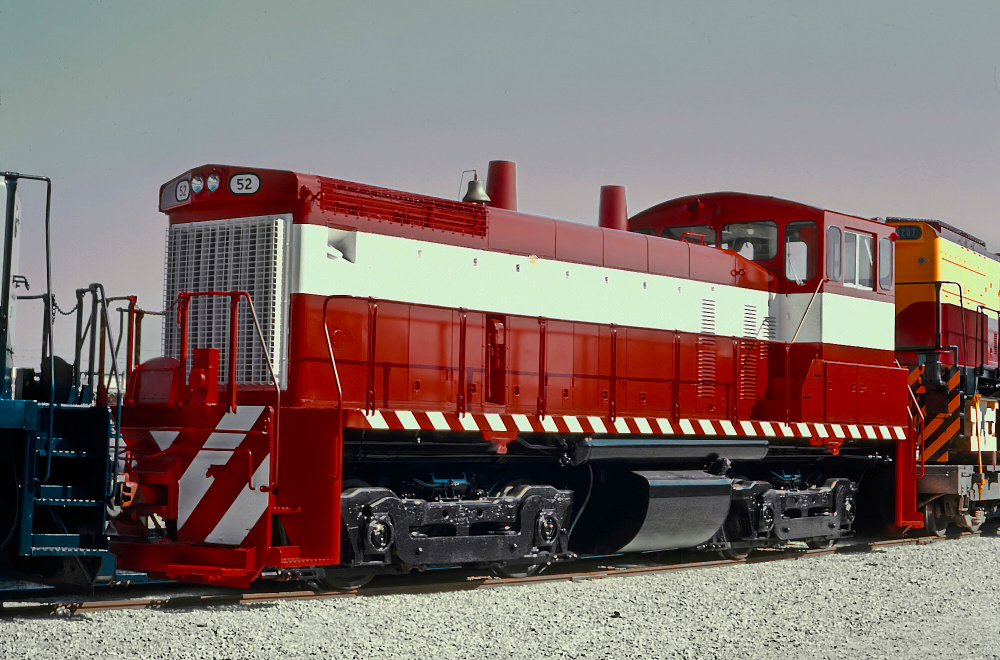
Jefferson Warrior Railroad SW1500 #52 features a standard cab, along with conventional
four-wheel switcher trucks. The model SW1500 was a notable departure from prior switcher
designs. (Bill Howes photo)
|
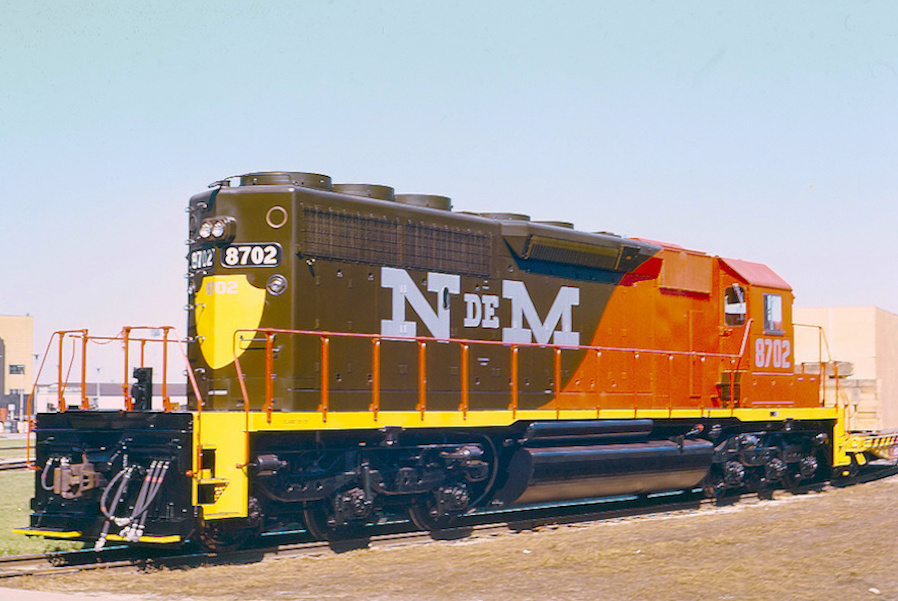
It's pretty evident that EMD's six-axle SD40-2 model was well liked by managers at the
Nacional de Mexico; the railroad purchased 103 of the 3000-hp locomotives between 1972
and 1986. They were numbered 8700-8798 and 13001-13004. (Bill Howes photo)
| 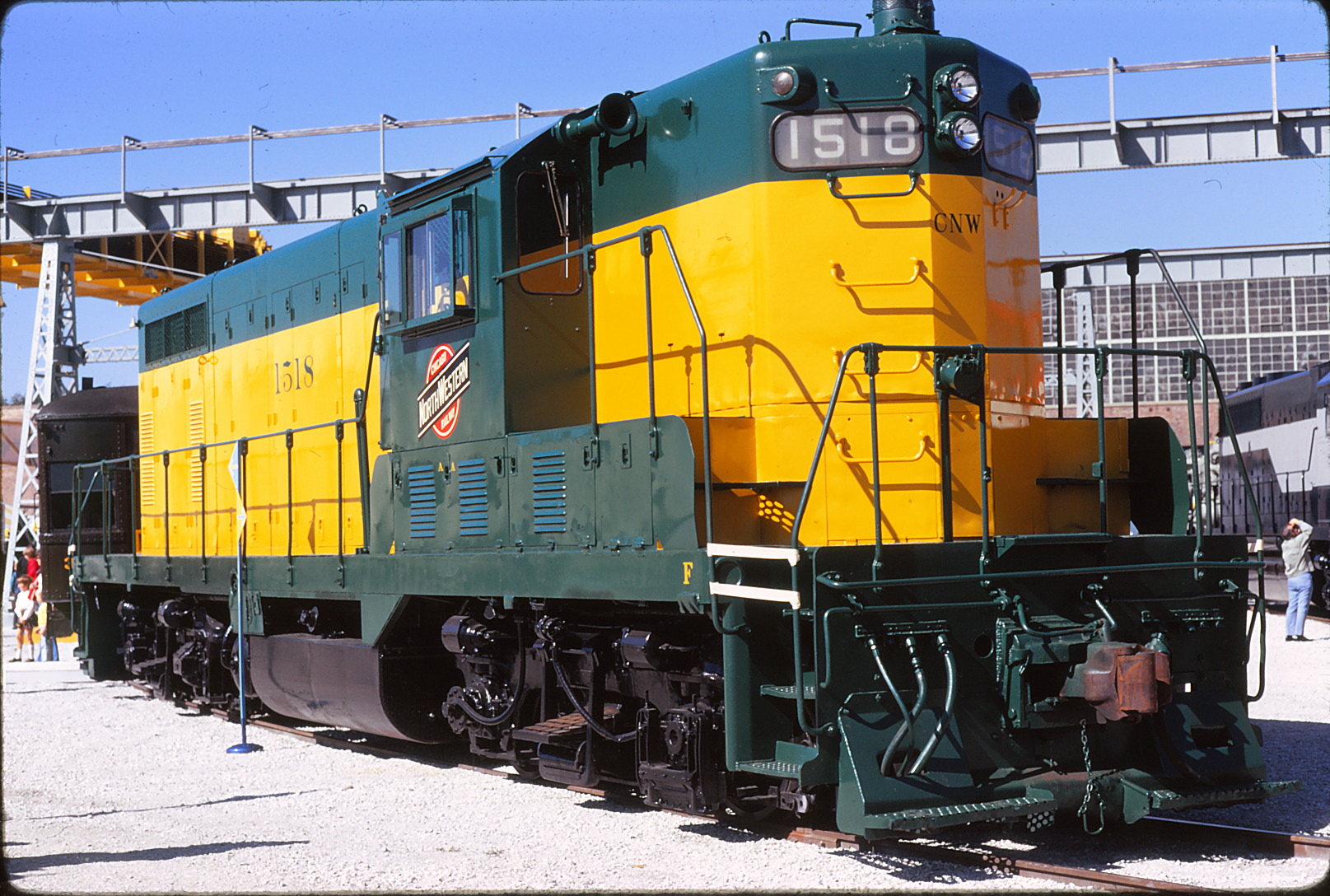
Built in 1949, #1518 was ex-EMD Demonstrator #100 and the first GP7; it was sold to C&NW.
Days after the above picture was taken, the geep was rebuilt as GP7R #4311.
The loco has been restored to its as-delivered condition at the Illinois Railway Museum. (R.
Craig photo)
|
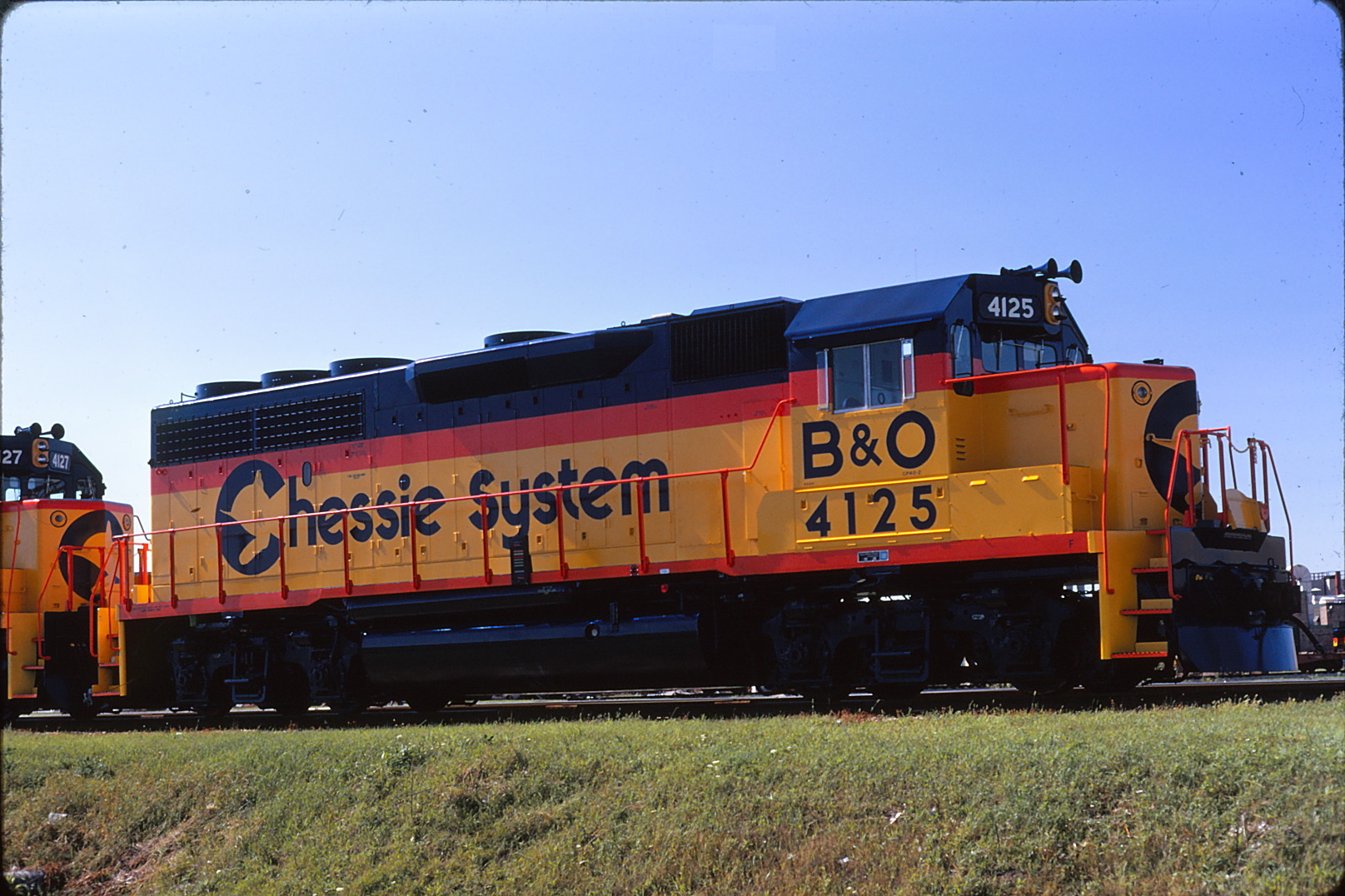
Chessie System, the new holding company (B&O + C&O + WM) formed in 1972, made its presence
known quickly. Fresh from the paint shop in flashy attire, two new Chessie GP40-2s stand
ready for shipment to owner Baltimore & Ohio. The pair of 3000-hp road units were parked
in back of the EMD plant near the IHB-interchange track. (R. Craig photo)
| 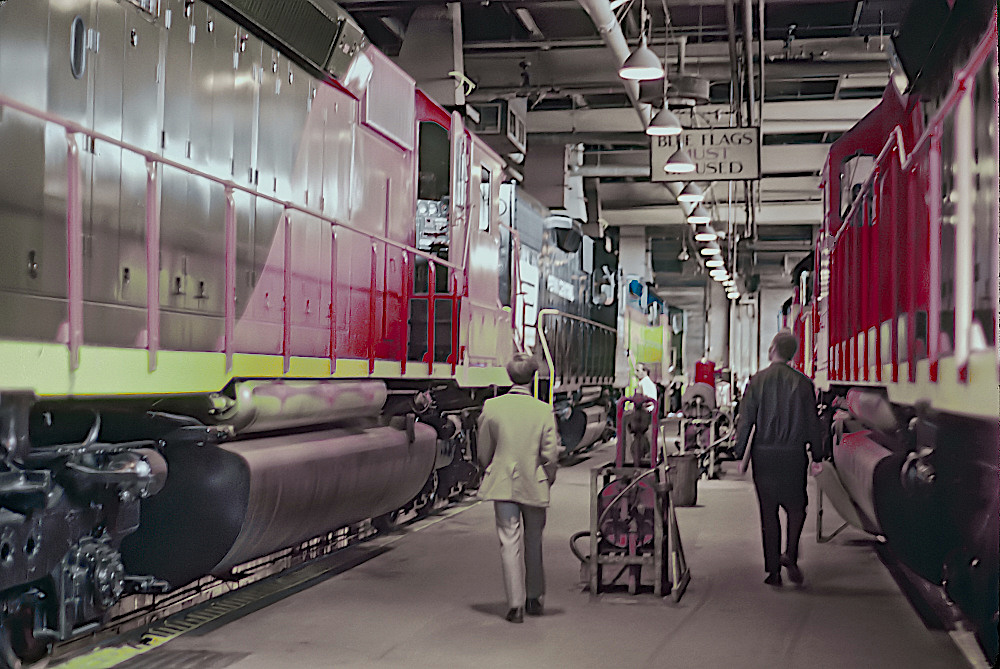
The 50th Aanniversary celebration also provided a rare opportunity for a behind-the-scenes
look at the builder's paint department. It's that special place where skilled craftsman
transform large, steel and sheet-metal forms into bright, colorful machines that draw us
trackside and gain our favor. (Bill Howes photo)
|
